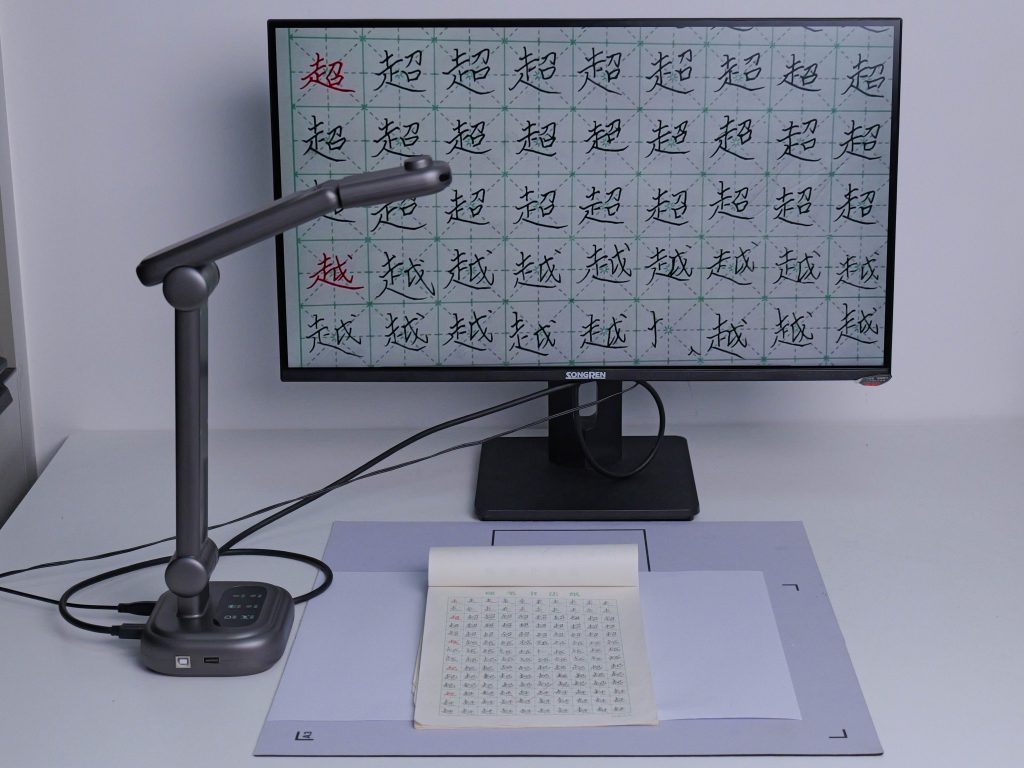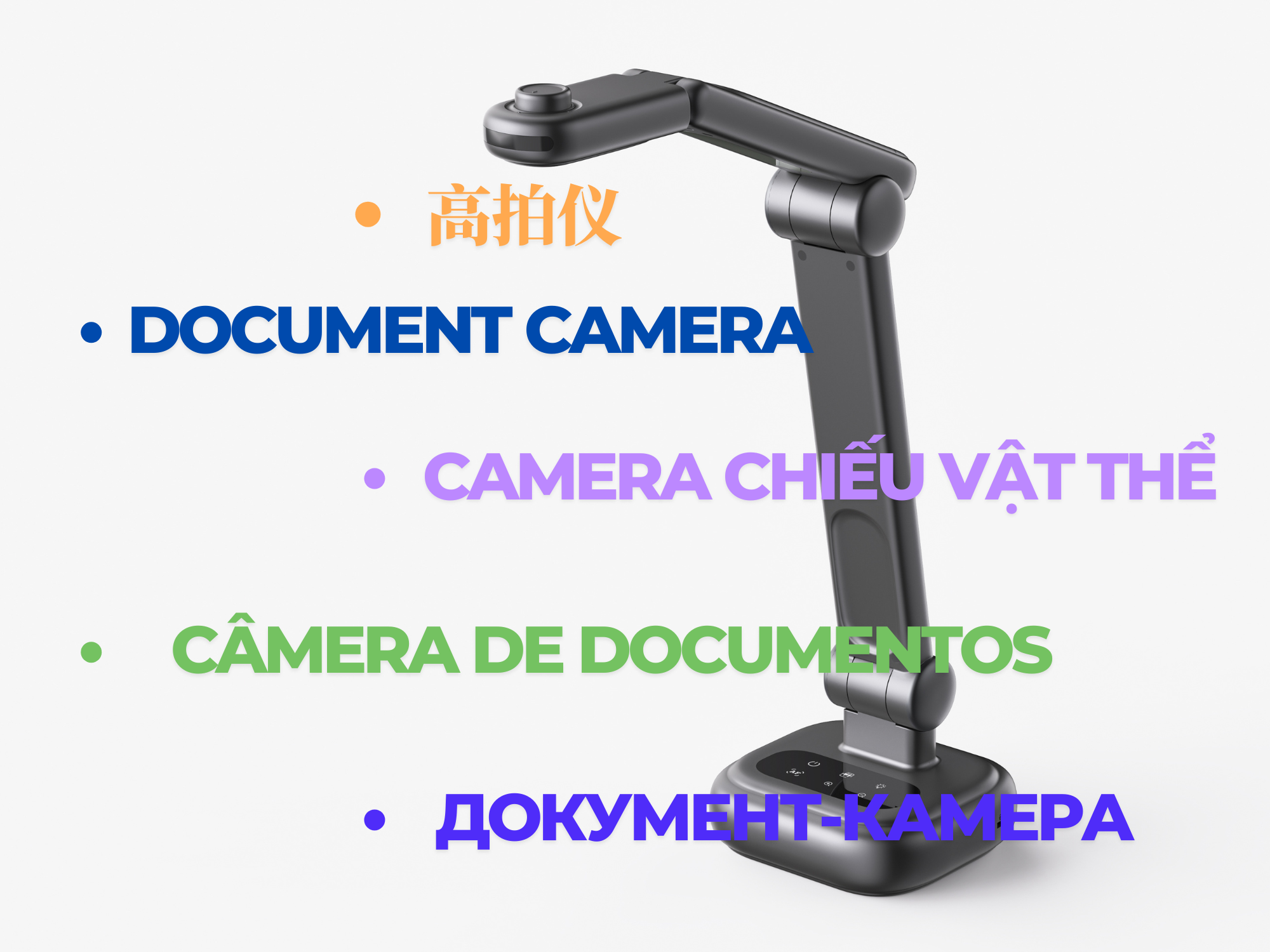Document cameras, also known as visualizers, have become essential tools in modern education and professional environments. However, the way these devices are referred to and used can vary significantly across different countries and regions. In this article, we will explore how the terminology and adoption of document cameras differ across several countries and regions, as well as the factors that influence these differences.
1. China: “Gao Pai Yi” (高拍仪)
In China, the term “Gao Pai Yi” (高拍仪), literally meaning “high camera,” has become the most common way to refer to document cameras. The name highlights the key function of the device: capturing high-quality images of documents. This term is widely accepted in both educational and business contexts, reflecting the device’s role in enhancing teaching, presentations, and document management. Over time, “Gao Pai Yi” has become a staple term in the Chinese market, often used interchangeably with “document camera.”

2. Vietnam: “Object Project” (Camera Chiếu Vật Thể)
In Vietnam, document cameras are often referred to as “Object Project” (Vietnamese: Camera chiếu vật thể), which translates to “object projector.” This term emphasizes the device’s ability to project physical objects (such as documents, books, and small objects) onto a screen. The name is indicative of the device’s use in education, where it helps display educational materials in real-time for better visual engagement. The adoption of this term aligns with the growing emphasis on visual learning in the Vietnamese education system.
3. Brazil: “Camera de Documentos”
In Brazil, the term “Camera de Documentos” (Portuguese: document camera) is commonly used. This straightforward name directly describes the primary function of the device — capturing and projecting documents. The widespread use of this term in Brazil can be attributed to the increasing demand for document digitization and interactive learning tools in educational institutions. The term has become synonymous with the device’s role in helping students and professionals view and share documents in a digital format.
4. United States and Europe: “Document Camera” / “Visualizer”
In both the United States and many European countries, the terms “Document Camera” and “Visualizer” are most commonly used. These terms highlight the device’s functionality, where a “document camera” is typically used in classrooms to display documents, while “visualizer” can refer to a broader range of multimedia presentations, including text, images, and other materials. The usage of these terms reflects the device’s versatility in both educational and professional environments. As digital education and remote learning have become more prevalent, these devices have found a place in virtual classrooms and online presentations as well.
5. Japan: “Shoga Camera” (書画カメラ)
In Japan, the term “Shoga Camera” (書画カメラ), or “calligraphy and painting camera,” is often used. This name reflects Japan’s strong cultural heritage in traditional arts such as calligraphy and painting, and the document camera’s role in capturing and displaying detailed artwork. The device’s ability to accurately reproduce intricate details makes it particularly popular in art and culture-related educational contexts.
6. Other Regions: Variations and Local Adaptations
In other countries, such as India, Southeast Asia, and parts of the Middle East, the names and uses of document cameras can vary. Some regions may refer to the device as a “document scanner” or “digital projector,” emphasizing its scanning or projection capabilities. In some cases, local terms may be adapted based on the specific features or functions most relevant to the users in those areas.
Why Are There So Many Different Terms?
The differences in terminology and usage can largely be attributed to cultural, educational, and market needs. In some regions, the focus may be on the device’s ability to project physical objects, while in others, the emphasis may be on its role in digitizing documents. Additionally, language plays a significant role in shaping how the product is perceived and marketed in different countries. The varied names also reflect the way these devices are integrated into different education systems, office environments, and industries worldwide.
Conclusion
Despite the different names used around the world — whether “Object Project” in Vietnam, “Camera de Documentos” in Brazil, or “Document Camera” in the U.S. and Europe — the core function of the device remains the same: capturing, displaying, and sharing documents and objects. The terminology reflects regional preferences and cultural influences, but the technology itself continues to evolve and gain adoption globally, driven by the growing demand for interactive and digital tools in education and business.

